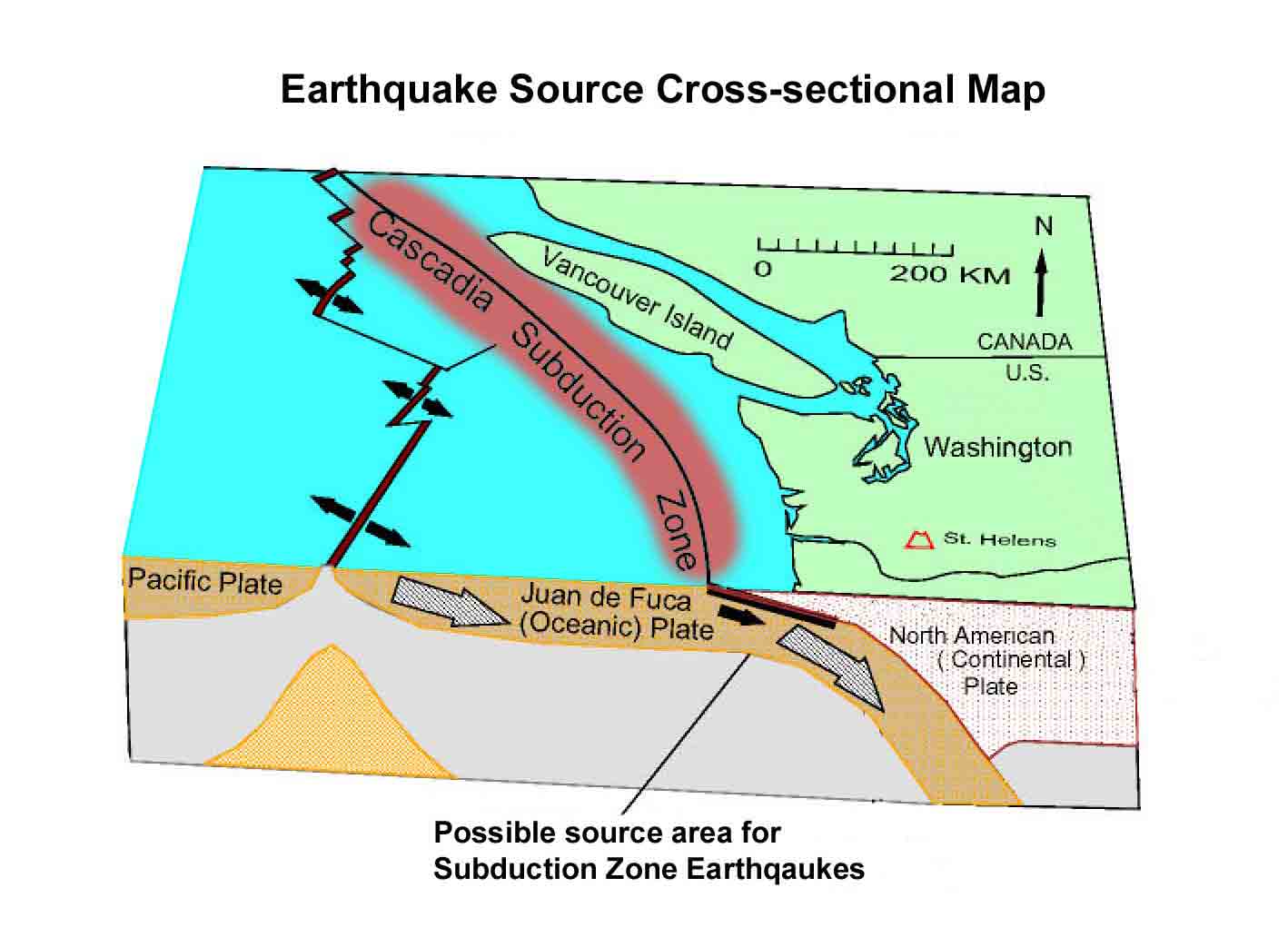Virtual
Tour > Intro > What Causes an EQ > How we locate EQ's > Equipment > Volcanoes > The End!
The Subduction Zone
 |
The first of the earthquake zones is
the Cascadia Subduction zone, which is located just
off the coast of Washington and Oregon. This
subduction zone can produce earthquakes as bis as any in
the world. The fault spans over a thousand miles,
meaning that it could produce up to a 9.0 magnitude
earthquake!
|
| The Juan de Fuca plate is being
pushed by the Juan de Fuca spreading ridge. This spreading
ridge, which is located hundreds of kilometers off the coast
of Washinton and Oregon, is an area where new sea floor is
being created. The Juan de Fuca plate then gets pushed under,
or subducts, the North American plate, which is what we live
on. As the Juan de Fuca plate tries to subduct, the
plates are locked together by friction, causing the North American
plate to bow upwards (top figure). When the tension
becomes too great, the North American plate finally
releases the tension and an earthquake occurs (lower
figure). Work is currently being done by Washington's
state seismologist to measure the amount of uplift that
is occurring by using very accurate GPS (Global Positioning
System) coordinates. The hope is that we can measure
how much tension is building up on the Subduction zone
so that one day we can tell when an earthquake is likely
to occur. |
 |
The last time an earthquake
was created by this fault was in 1700. With geologic
evidence, as well as written records from Japan (which
got hit by tsunamis created by the earthquake), we
can deduce that it was a rather large earthquake that
happened January 26, 1700. This earthquake was much
larger than the Nisqually earthquake, possibly reaching
up to a magnitude 9.0 on the Richter scale.
To learn more about the Cascadia
Subduction Zone, click here
|
Next
>>>
|
|